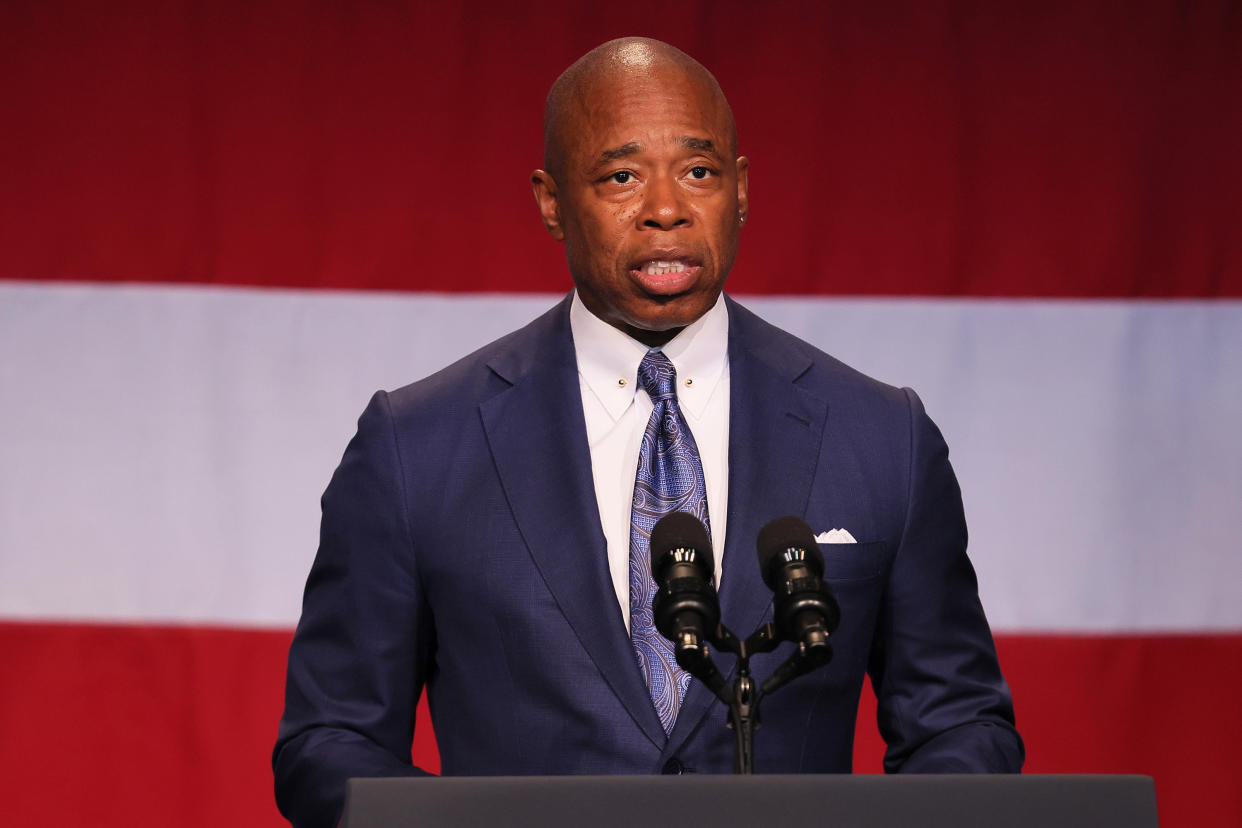Making sense of Mayor Eric Adams’ about-face on NYC budget cuts

Mayor Eric Adams spent the past week announcing restorations to some critical city services that were on the chopping block, changing course after telling New Yorkers in November he would scale them back. He cited better than expected revenue projections and lower projected costs tied to managing the migrant crisis for the reversal.
The about-face is good news for New Yorkers, who can now expect more NYPD officers and firefighters on the streets, the same number of trash cans and a parks jobs program. Young people can once again count on summer enrichment programs and jobs after Adams restored them. Here’s a breakdown on how was Adams able to restore these programs even as he claims New York City is in dire financial straits.
How did we get here?
First, let’s go back to November 2023, when Mayor Adams announced deep cuts to all city agencies, following through on an order that asked every department – including the NYPD – to find ways to trim their budgets without sacrificing services. He described his proposed cuts as “painful.”
The result was a reduction in NYPD graduating classes and firefighter personnel, delays in the citywide composting program and reduced library hours. Adams called the cuts necessary for a number of reasons. Those included COVID-related federal funds drying up, a push to close a $7.1 billion budget hole, and the migrant crisis that would ultimately cost New Yorkers $12 billion over the next three years. Adams needed to find the money somewhere. He turned to agencies to impose cuts while also committing to reducing migrant costs by 20%.
While Adams pinned much of the city’s decisions to cut budgets on the migrant crisis, the City Council saw otherwise. It blamed Adams for not scouting for nonprofit companies to carry out case management work for migrants at a cheaper price than the private firms his administration hired.
What changed for Adams to reverse the cuts?
The city budget is based on what officials call projections — educated estimates on how much money the city is expected to receive. Those estimates are determined by how much money, or revenue, the city rakes in. And it’s made up of several buckets, including revenue in taxes and fines and how well Wall Street is doing. City Hall has the ability to make these projections, and it can either be on the safe (aka conservative) or cautiously optimistic (aka liberal) side.
Adams made clear his projections are based on conservative estimates.
“The Council projections can be more liberal. We have to make sure that we have enough money to pay the bills to keep the lights on,” Adams said at a news conference last Thursday.
During his announcements reversing agency cuts, Adams said “better than anticipated tax revenues” was one reason why he was able to reverse course on some of these trims. But Adams did not elaborate on what revenues precisely jumped, leaving those questions to be answered by his budget director, Jacques Jiha, this week.
Reductions in migrant spending were also credited for reversing some of the cuts, according to Adams. During his November announcement, Adams said he wanted migrant spending to be cut by 20%. It’s unclear what exactly was eliminated, but the reductions came as Adams sent vacate notices to migrant adults and migrant families that ordered them to leave the shelter system.
Will other agencies have their budgets restored?
That’s unclear. For now, Adams is slated to order agencies to cut more from their budgets in response to the slow revenue growth and migrant crisis.
Agencies already had to cut 5% of their budgets by November, resulting in programs getting delayed by upward of a year and not posting vacant positions, which translated to a reduction in services.
They’re expected to be hit with another cut in April.
_____


